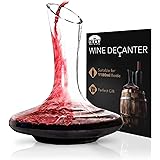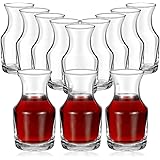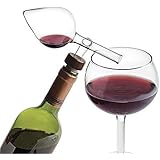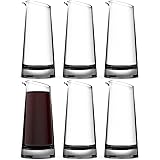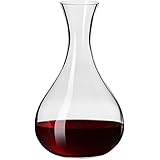The timeless pairing of wine and cheese has long been celebrated across cultures, often conjuring images of robust red wines served alongside rich, aged cheeses. This classic tableau is deeply embedded in our collective culinary consciousness, frequently considered the epitome of sophisticated entertaining. However, as the accompanying video insightfully reveals, this beloved tradition is, surprisingly, often based on a pervasive myth that can actually diminish the tasting experience.
For many years, the notion that a powerful red wine perfectly complements any cheese has been perpetuated, leading countless enthusiasts to inadvertently create chemical clashes rather than harmonious pairings. Indeed, it has been widely believed that the bolder the red, the better the match. Fortunately, understanding the true science behind successful wine and cheese pairing allows for a much more rewarding gastronomic journey, moving beyond outdated conventions to embrace truly complementary flavors and textures.
Unmasking the Red Wine and Cheese Myth
Firstly, it is important to address the widespread misconception surrounding red wine and cheese. While a cozy evening with a platter of cheese and a glass of red wine certainly sets a delightful scene, its purported status as a “perfect match” is often debunked by leading sommeliers and food scientists. This common belief, often described as “one of the biggest fallacies an enthusiast needs to demystify,” highlights a significant gap in popular understanding. The chemical interactions between a bold red wine and many types of cheese can actually result in an unpleasant tasting experience.
The primary culprit in this chemical clash is typically identified as tannins, compounds found in red wines that impart a dry, sometimes puckering sensation in the mouth. When these tannins encounter the fat and salt prevalent in most cheeses, an adverse reaction is often triggered. The fat tends to coat the tongue, which then amplifies the harshness of the tannins, while the salt further accentuates their bitterness. Consequently, what should be a delightful combination can unfortunately devolve into a metallic or otherwise unappealing flavor profile, compromising both the wine and the cheese.
The Science of Successful Wine and Cheese Combinations
Moving beyond the red wine myth, the real secret to exquisite wine and cheese pairing is found in understanding basic chemistry, rather than simply focusing on the wine’s color. Two fundamental “golden rules” have been established to guide enthusiasts toward consistently perfect matches. These principles are rooted in how different flavor components interact on the palate, ensuring that each element enhances, rather than detracts from, the other.
1. **Pairing by Similarity:** This approach involves matching wines and cheeses that share analogous qualities, allowing them to amplify each other’s best characteristics. For instance, a creamy, rich cheese, perhaps a triple-crème brie, finds an ideal partner in a buttery, full-bodied white wine like an oaked Chardonnay. The shared textural richness and depth of flavor create a seamless, integrated experience, where one complements and elevates the other without competition. This method aims for a harmonious echo of flavors.
2. **Pairing by Contrast:** Conversely, pairing by contrast is where opposites attract, creating dynamic and often legendary combinations. This strategy leverages opposing flavor profiles to achieve a remarkable balance. A prime example is the classic pairing of a intensely salty blue cheese, such as Roquefort, with a lusciously sweet dessert wine like Sauternes. The wine’s sweetness brilliantly cuts through and tames the cheese’s pungency and saltiness, resulting in an exciting “third flavor” that is greater than the sum of its parts. Such contrasts lead to truly memorable culinary moments.
Decoding the Five Key Flavor Partners
Understanding the interplay of five key flavor partners in wine and cheese allows for a more intuitive approach to pairing. These elements work in concert, or sometimes in opposition, to shape the overall tasting experience. By mastering these interactions, a truly balanced and delightful culinary symphony can be achieved on the palate.
1. **Acidity (The Hero):** Often described as the palate cleanser, acidity in wine is crucial for cutting through the richness of fat. Wines high in acidity, such as a sparkling Brut or a Dry Riesling, effectively refresh the mouth, preventing the palate from becoming fatigued by creamy textures. This cleansing action ensures that each bite of cheese and sip of wine remains vibrant and enjoyable, making acidity a fundamental component in many successful pairings.
2. **Fat (The Tricky Partner):** While fat in cheese contributes to its delectable texture and richness, it is also the element that most frequently clashes with tannins. The creamy coating of fat on the tongue intensifies the drying and bitter sensations of tannic wines. However, when paired with high-acid or sweet wines, fat can be beautifully balanced, creating a smooth and indulgent experience without any harsh aftertaste.
3. **Salt (The Wild Card):** Salt is a complex ingredient that can dramatically alter a wine’s perception. It can make certain wines taste fruitier and more vibrant, but it also has the uncanny ability to exaggerate the bitterness of tannins. When considering salty cheeses, opting for wines with a touch of sweetness or ample acidity is often the most effective strategy, as these elements can beautifully counteract the saltiness and elevate the overall flavor profile.
4. **Sweetness:** Found predominantly in dessert wines or off-dry varietals, sweetness plays a vital role in balancing salty and pungent cheeses. The sugars in the wine provide a comforting counterpoint to intense flavors, effectively mellowing them out. This creates a rounded, opulent sensation, as seen in the renowned pairing of blue cheese with a sweet Port, where the sweetness envelops and harmonizes the powerful notes of the cheese.
5. **Pungency:** Pungent cheeses, with their assertive aromas and bold flavors, demand wines that can stand up to their intensity without being overshadowed. This is where the magic of contrast often shines brightest. Wines with strong flavor profiles, whether sweet, acidic, or robust, are needed to create a balanced dialogue, ensuring neither the wine nor the cheese is lost in the pairing. The interaction often leads to the coveted “third flavor,” a novel taste experience distinct from either component.
Achieving the Elusive “Third Flavor”
The ultimate goal in wine and cheese pairing is to transcend a simple combination and achieve what experts term the “third flavor.” This refers to a completely new and integrated taste that emerges from the harmonious interaction of the wine and cheese, a flavor profile that is more complex and delicious than either element could be on its own. This synergistic effect transforms a basic snack into a truly elevated culinary experience, often surprising the palate with unexpected depths and nuances.
Consider the celebrated combination of Roquefort, a potent blue cheese, with a sweet Sauternes. The immense saltiness and intensity of the Roquefort are beautifully tamed by the honeyed sweetness and balancing acidity of the Sauternes. This interaction doesn’t just mute the cheese; it creates a novel, deeply satisfying flavor that speaks to the brilliance of pairing by contrast. Similarly, an aged Comté, with its nutty, savory notes, finds a perfect partner in a nutty Vin Jaune. Here, the flavors resonate with such similarity that they amplify each other, creating an enriched, cohesive experience that exemplifies pairing by resemblance.
Legendary Pairings: Where Science Meets Delight
The principles of similarity and contrast are beautifully illustrated by some of the world’s most iconic wine and cheese pairings. These “made in heaven” combinations demonstrate how understanding flavor dynamics can lead to truly unforgettable gastronomic moments, extending far beyond the traditional French classics to embrace a global palate.
Firstly, the French duo of **Roquefort and Sauternes** stands as a masterclass in pairing by contrast. The intense saltiness and characteristic blue mold notes of the Roquefort are perfectly softened and integrated by the rich, honeyed sweetness of the Sauternes, revealing a luxurious, balanced “third flavor.” Conversely, the pairing of a nutty, aged **Comté with a Vin Jaune** from the Jura region showcases pairing by similarity. Both the cheese and the wine possess profound nutty, savory undertones that, when combined, create a deeper, more resonant flavor experience.
Moving across Europe, **Manchego from Spain paired with an Amontillado Sherry** provides another excellent example of similarity. Both the semi-hard sheep’s milk cheese and the fortified wine share delightful nutty, savory, and almost saline characteristics. When tasted together, these flavors do not clash; instead, they echo and build upon each other, culminating in a wonderfully deep and satisfying sensation on the palate. These carefully curated matches highlight how regional specialties often evolve to complement each other perfectly.
Even in the New World, these rules apply, yielding modern classics such as a sharp, complex **aged American Cheddar with a bold, fruity California Zinfandel**. This pairing thrives on similarity; both the cheese and the wine are intense, packed with flavor, and possess a robust character. The Zinfandel, with its powerful fruit notes and often a touch of spice, is robust enough to stand alongside the formidable cheddar without being overshadowed, creating a vibrant and satisfying alliance.
Crafting Your Ideal Cheese and Wine Experience at Home
Armed with this expert toolkit, the creation of a truly magnificent cheeseboard becomes an exciting and achievable endeavor. Elevating a simple gathering into a sophisticated tasting event is made easier by following a few practical guidelines for preparation and presentation, ensuring every element contributes to an unparalleled experience.
The Art of the Cheeseboard: Order and Accompaniments
1. **Order of Tasting:** This is an absolutely non-negotiable rule for maximizing enjoyment. Cheeses should always be tasted from the mildest to the strongest. Starting with a powerful blue cheese, for example, will overwhelm the tastebuds, rendering the subtle nuances of a delicate fresh goat cheese imperceptible afterward. Therefore, build intensity gradually, beginning with fresh and soft cheeses, progressing to semi-hard, then hard-aged, and finally, reserving the most pungent and assertive cheeses for the grand finale.
2. **Thoughtful Accompaniments:** The elements surrounding the cheese are not merely decorative; they serve crucial roles in enhancing the tasting experience. Neutrals such as crackers or slices of baguette act as a palate-cleansing canvas, preparing the tastebuds for the next cheese. Sweet items like fig jam or honey provide an essential bridge, balancing the intensity of salty or pungent cheeses. Nuts offer a delightful textural crunch, while fresh fruits like grapes or apple slices introduce a burst of freshness, offering a natural palate cleanser between different cheese varieties.
Your Secret Weapon Wines: The “Jokers” of Cheese Pairing
When presenting a diverse array of cheeses, the idea of opening multiple bottles of wine can seem daunting. Fortunately, there are three incredibly versatile “joker” wines that can harmonize with almost any cheese on your board. These wines are indispensable for simplifying the pairing process without sacrificing complexity or enjoyment.
1. **Sparkling Brut:** An amazing choice due to its effervescence and high acidity. The lively bubbles and refreshing acidity of a Brut can effectively cut through the richness and fat of virtually any cheese, cleansing the palate and invigorating the tastebuds. This versatility makes it an excellent all-rounder for a mixed cheeseboard, providing a consistently refreshing counterpoint.
2. **Dry Riesling:** This wine is an absolute champion in the world of cheese pairing, celebrated for its complex flavors and vibrant acidity. A good Dry Riesling possesses the inherent structure to complement a wide spectrum of cheeses, from the delicate creaminess of fresh goat cheese to the robust funkiness of washed-rind varieties. Its aromatic profile and crisp finish ensure a delightful interaction with diverse flavors.
3. **Tawny Port:** As the heavy hitter for challenging cheeses, Tawny Port is the ideal companion for the most intense and salty blues. Its inherent sweetness and rich, nutty flavors provide a perfect foil to powerful, assertive cheeses, creating a luxurious and balanced pairing that mellows their intensity. This fortified wine ensures even the most formidable cheeses are met with an equally commanding, yet complementary, partner.
Ultimately, the journey from merely grabbing a bottle of red to thoughtfully selecting complementary wines marks a significant evolution in one’s wine and cheese pairing philosophy. The core principle to embrace is not about distinguishing between red and white, but rather focusing on achieving a delicate balance. It is all about skillfully utilizing elements like acidity and sweetness to master fat and salt, unlocking an entire new realm of amazing wine and cheese pairings that promise to delight and surprise.


